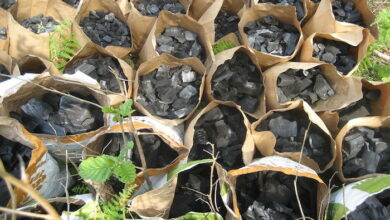Worm Farming at Zaytuna Farm

Worms are an essential part of a permanent agricultural system. At Zaytuna Farm worm farming has been developed into a very productive system. The feed stock we use is the contents of composting toilets and animal manures. The worm farm product is included in the potting mix for the plants grown in the plant nursery of the farm, producing very healthy and productive plants.
The origins of this method of worm farming comes from my experience as a Permaculture advisor and trainer in Lesotho, 2012-2014 (Miles Durand’s author profile).


A number of bath tubs are placed in a reticulated shade house and used as worm farm containers forming a worm farm train. Each tub in the farm train is an independent worm farm. A length of agriculture drainage pipe is place on the bottom of the bath with one end exposed to the air. Weed matt is placed over the agricultural drainage pipe to prevent the drainage holes being blocked by the worm bed material. This enables the essential worms need of air/oxygen to move from the bottom to the top of the worm bed and the feed stock. The feed stock of animal manure and old compost toilet material is filled to the top of the bath. Manure worms are added to the bedding material and feed stock then covered with a cardboard blanket and hessian bed spread cover. Water is applied to the worm farm and the resulting worm juice is collected in the container placed under the drain hole of the bath tub. The worm farm juice is mixed with water and fish concentrate and applied to seedlings in the plant nursery as a natural fertiliser and soil conditioner.

When the feed stock has been consumed by the worms the covers are removed. The worms dig down into the casting to avoid the light. The worm castings are scrapped off in thin layers to be used in potting mixes and garden beds. Then the bath tub is refilled with manure, aged compost and toilet material. And this harvest process takes place on the next bath tub worm farm.



In this method of worm farming, no kitchen scraps or garden waste are added to the worm farm as feed stock. High nutritional materials such as kitchen scraps are feed directly to the poultry, producing high nutritional products such as eggs and meat.

This worm farming system meets the requirements to be considered part of a permaculture design system. It reuses bath tubs, recycles waste organic matter and reduces energy input. The inclusion of small animals , such as worms into cultivated eco systems is part of the philosophy of permaculture design, working with nature. Small is indeed beautiful and very productive.
Is worm farming at Zaytuna farm a worthy endeavour, do hens lay eggs?

Further Reading:
- Everything You Need to Know About Composting With Worms
- How to Make a Worm Mansion
- Rob’s DIY Vermipod
- A Worm Farm in Your Duck Coop!













Inspiring.
Great system well done! Rats are eating my worms and usual chicken feed problem does anyone have a good rat trap design?
Hi, I’m curious about the old humanure…how old must it be to be fed to worms? Thanks
Hi very inspiring article. Plan to start a worm farm (already have a bucket with a few red wrigglers from our septic tank). What I would like to know is 1. how many worms did you use to start a bath full of compost? 2.What breed of worms did you use? and 3. how long does it take to convert a bath of manure into compost? Many thanks, Lucy
PS Have seen a deal here in Spain for Californian red worms: am I better off getting 1,000 adult worms or 1,000 worms with 10% adult worms and the rest eggs and young uns? Many thanks, Lucy